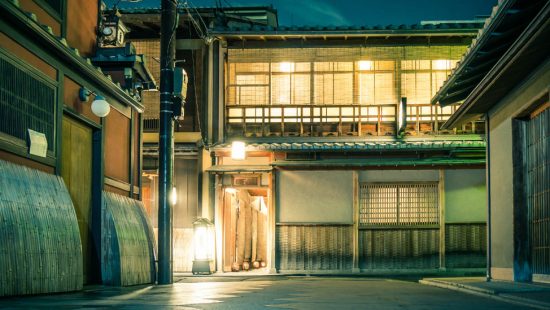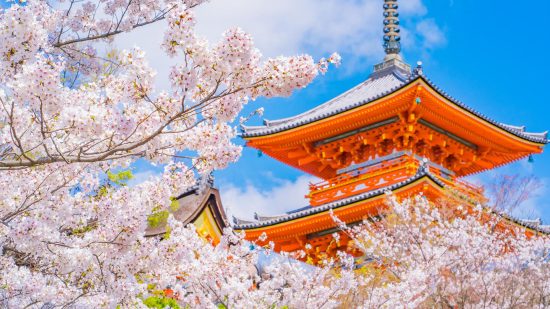Explore the Ancient Wonders of Japan With Your Next Group


A Walker’s Paradise: Stroll Through Historic Kyoto
A must see visit for any group travelling to Japan is the quintessential city of Kyoto, famous for its cobblestone streets, gardens and historic buildings. Kyoto flourished as Japan’s imperial capital for some 1,100 years. Many temples, shrines, palaces and gardens, including 17 UNESCEO World Heritage Sites, were built during this long period. As a result, the city offers an excellent opportunity for small groups to take guided walks and delve into the heart of this “thousand year capital.” Here are five ‘not-to-be-missed’ sites:
Fushimi Inari Shrine
Built in 711, the Fushimi Inari Shrine is one of the oldest shrines in Japan dedicated to Inari, the Shinto God of Rice and Wines. With over 5,000 rows of vermillion tori gates winding through the 2.5 miles (4 km) hiking trails and steps up the mountainside, it is one of the most iconic sights of Kyoto. This location may also be familiar to film buffs, as part of the movie Memoirs of a Geisha was shot here. With our guide, we take the time to walk along the whole trail, which leads up to the top of the Inari Mountain and takes about two hours. On reaching the top of the mountain, we are rewarded with a fantastic view of Kyoto, as well as an excellent opportunity to photograph the Tori Gates without crowds of tourists.

Pontocho Alley
A narrow alley running parallel to the west bank of the Kamo River, Pontocho is one of Japan’s oldest existing nightlife areas. It is considered by many to be among the most colourful and lively alleys in Kyoto. Early evening is the best time to take a stroll here, and with our guide, we will have time to immerse ourselves into the hustle and bustle of the alley as the evening progresses and the bars, restaurants and a few of the city’s elusive Geisha tea houses along this stone-paved passage start to welcome their guests. We may also have the opportunity to see Geishas or Maikos scurrying to their appointments, guided by the flickering lights of large paper lanterns hanging from many of the restaurant and bars. And what better way to finish off a magical night in Pontocho than with a group dinner in one of the alley’s popular restaurants?
Kinkakuji (Golden Pavilion) Temple
Well known as the symbol of Kyoto, the impressive Kinkakuji Temple offers wonderful garden setting for walking. Listed as a UNESCO World Cultural Heritage site in 1994, the temple features a shining pavilion with top two floors completely covered in gold leaf. Overlooking a large pond and beautiful gardens, the temple was originally built at the end of the 14th century as the retirement villa of a shogun. After his death, it was converted into a temple. The best time to visit the temple is in the late afternoon, when the lowering sun shines brightly on the surface of the top two floors of the pavilion. As we walk around the pathway, we will see the pavilion, the pond and rocks changing shape and colour.


Tenryu-ji (the Heavenly Dragon) Temple and Bamboo Forest
A leisurely 1.5 hour morning walk with our guide is the best time to experience the beauty and tranquility of Tenryu-ji and its surrounds. Originally built on the site of an early temple and of later imperial residences, the UNESCO-listed Tenryu-ji Temple is well known for its Zen garden and the nearby winding trail lined with thousands of towering bamboo stalks. The complex was built in 1339 using a traditional Japanese technique of “borrowed scenery,” which allows the surrounding scenery to be a “background” of the garden. Another amazing characteristic is the open design, which lets people to both see the temple from the garden and appreciate the beauty of the garden while they are inside the temple. From the temple it is a short walk to the trail through the Bamboo Forest. This trail takes wanderers to the top of the hill for excellent panoramic views of the river gorge below, and of the dense forests on the far side of the river.
Nijo Castle
Nijo Castle, built with elaborate décor and fine craftsmanship, is on every walker’s “must-do” list. The building of the castle started in 1603, taking 23 years to finish. This was originally the residence of Shogun Tokugawa Layasu. When he lost the power, it became an imperial palace. With huge stone walls surrounded by deep moats, Nijo-jo Castle openly demonstrated the power that the Shoguns wielded over Japan for much of its history. With our guide, we will take at least two hours to see both the palaces and the gardens. Ninomaru Palace consists of Shogun’s quarters, offices, and meeting halls in five separated buildings connected by long “nightingale corridors,” which would alert the guards of intruders. Three gardens on the castle grounds are also well known for their spring blossom viewing season, and for the colors of their autumn leaves.




